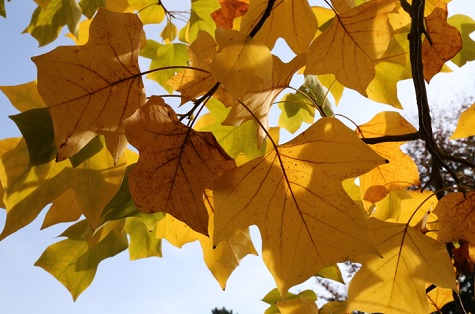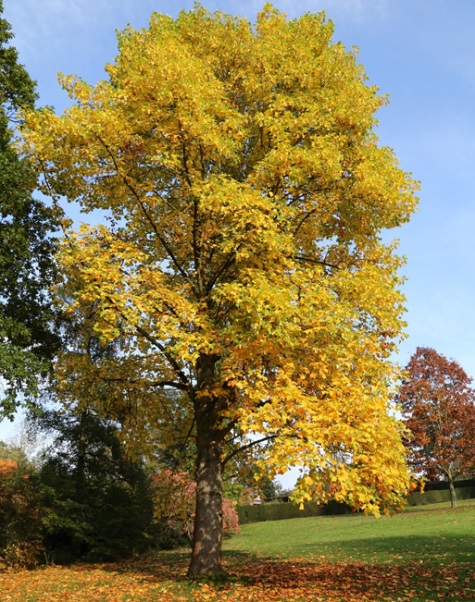This week I am keen to talk about a specific ornamental tree that during the last 30 years has become a popular choice in many parks and large gardens.
The Tulip Tree, scientifically known as Liriodendron tulipifera, is a large deciduous tree native to the eastern part of North America. It is also commonly referred to as yellow poplar, tulip poplar, or tulip magnolia, although it is not closely related to the true magnolias.

Liriodendron, or Tulip Tree is quite unique, named after its distinctive flowers that appear each summer in a rich yellow and green colour with a contrasting orange base. It is a fast growing tree, ideal for large gardens and open spaces.
Its common name, Tulip ree refers to the small, pale green tulip-shaped flowers which only appear on mature trees, usually over ten years old.
When young, the Liriodendron will form a conical shape however as it matures it will form a broad, oval canopy.
A further attraction to this tree is the foliage, dark green shade during the summer months, it has an unusual leaf shape, and it is these leaves which take on attractive buttery yellow tones prior to leaf fall in autumn.
The Tulip Tree is also a fantastic choice for urban areas thanks to the trees robust nature and amazing tolerance of pollution, making it a popular choice for towns and cities.

Here are some key characteristics of the Tulip Tree:
- Size and Appearance: Tulip trees are known for their impressive size, often reaching heights of 70 to 90 feet (21 to 27 meters) or more. In favourable conditions, they can even grow over 100 feet (30 meters) tall. The trunk is typically straight and can have a diameter of 2 to 4 feet (0.6 to 1.2 meters). The tree has a pyramidal or columnar shape when young, but it becomes more broad and rounded with age. The distinctive leaves are four-lobed and resemble tulip flowers, hence the common name.
- Leaves: The leaves of the tulip tree are large, measuring around 4 to 8 inches (10 to 20 centimeters) long. They have a unique shape with four lobes that create a distinctive tulip-like silhouette. The leaves are bright green and have a smooth texture. In the fall, they turn yellow or golden, adding to the tree's visual appeal.
- Flowers: Tulip trees produce beautiful, tulip-shaped flowers in the late spring to early summer, typically in May or June, depending on the region. The flowers are yellow-green with orange markings inside. While they are visually striking, they are located high up in the tree canopy and may be difficult to see from the ground.
- Fruits: After the flowers, tulip trees develop cone-like fruits composed of dry, winged seeds. These structures are often referred to as samaras or "tulip tree cones." Each cone contains numerous seeds that are dispersed by the wind.
- Uses: Tulip trees have been valued for their wood, which is lightweight, easily worked, and resistant to decay. The wood is commonly used in cabinetry, furniture, musical instruments, and veneer. Additionally, the tree provides significant ecological benefits by supporting various wildlife species and acting as a valuable source of nectar for bees.
Tulip trees are often planted as ornamental trees in parks, gardens, and larger landscapes due to their majestic stature, attractive foliage, and showy flowers. Their rapid growth rate also makes them popular for providing quick shade.
As for costs depending on the size of plant being sold generally starting at around £30 for a small 3ft size specimen in most garden centres.-